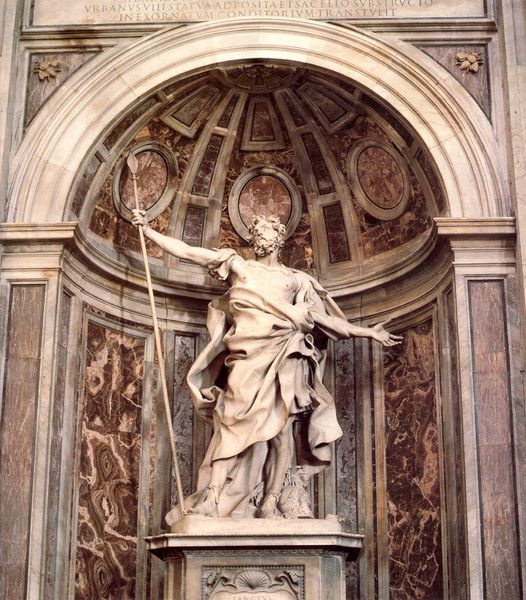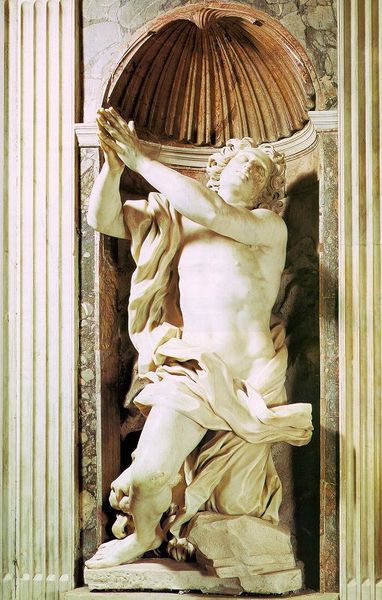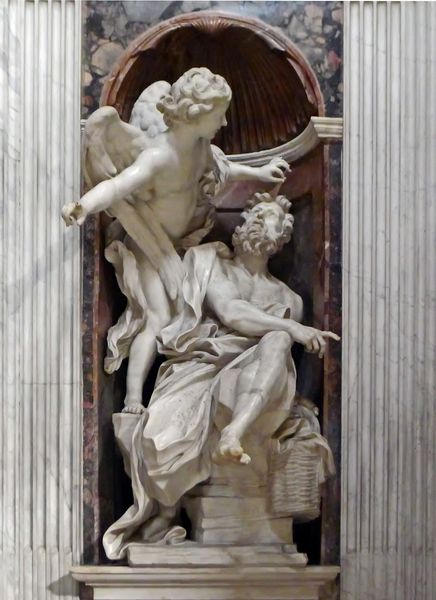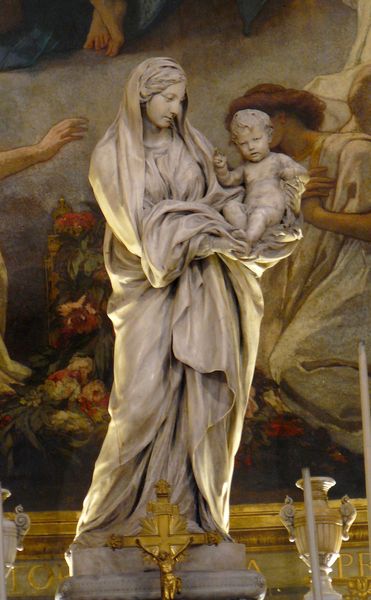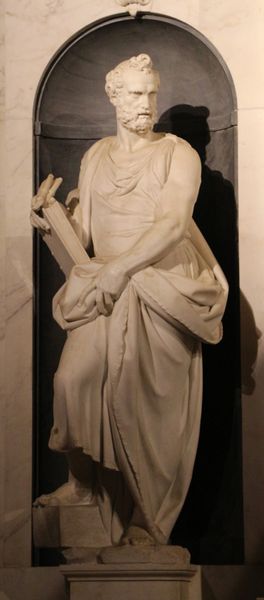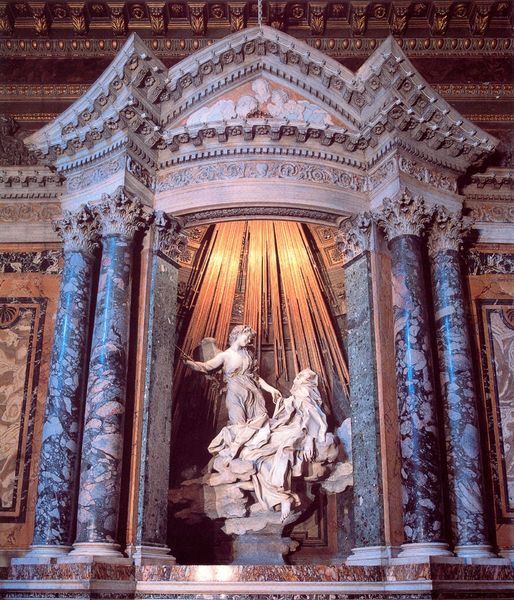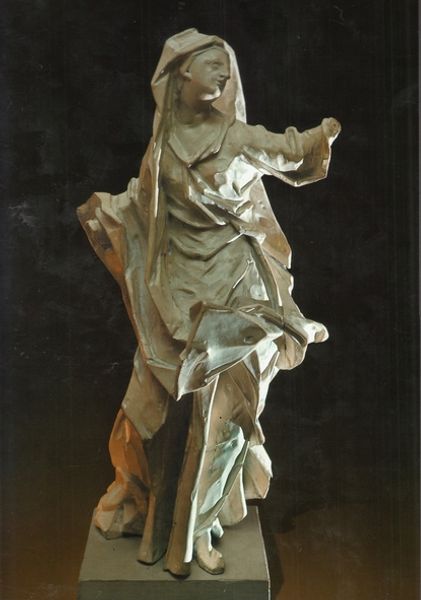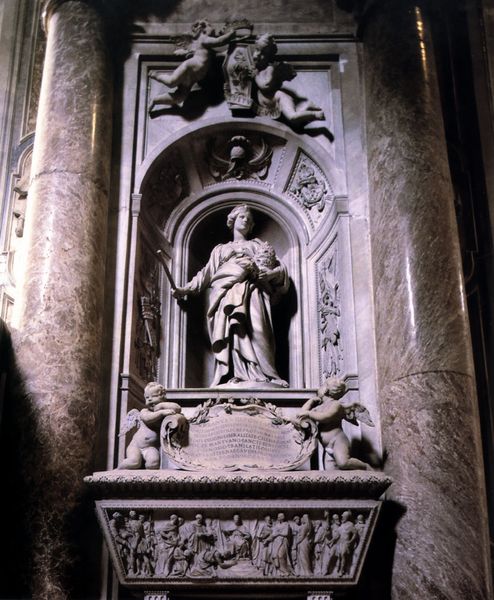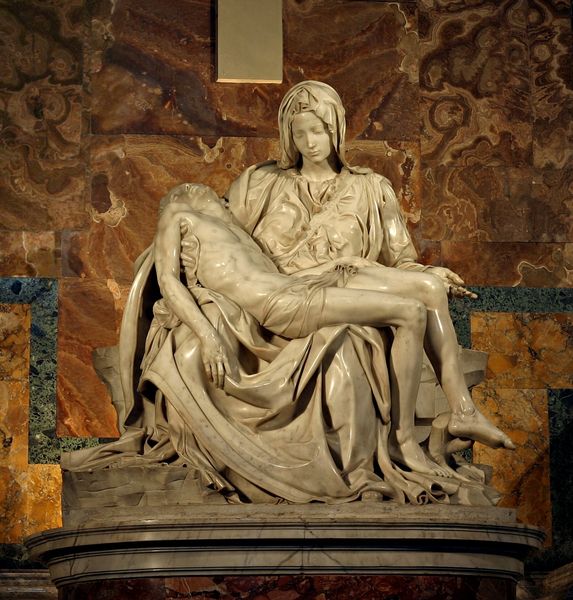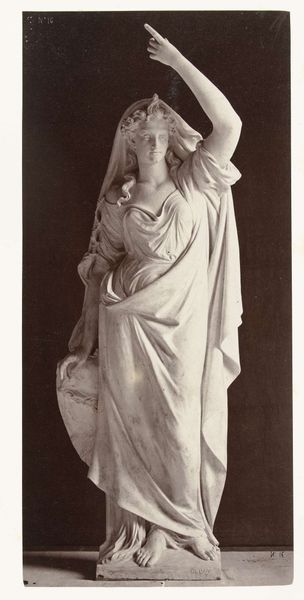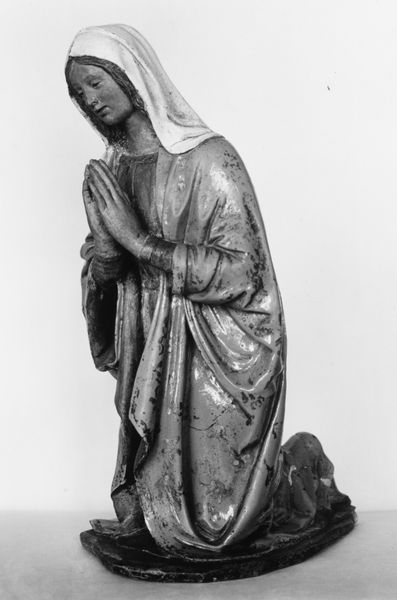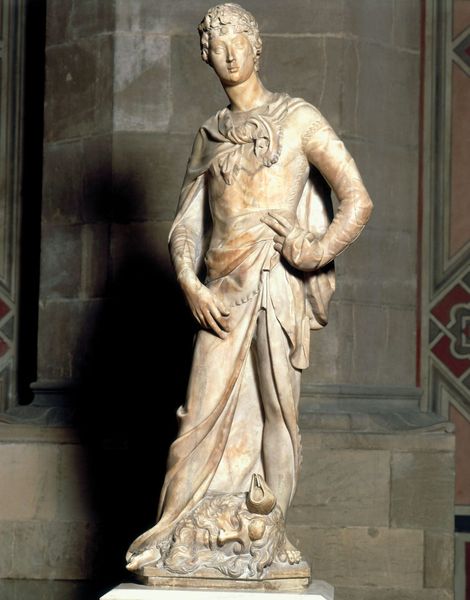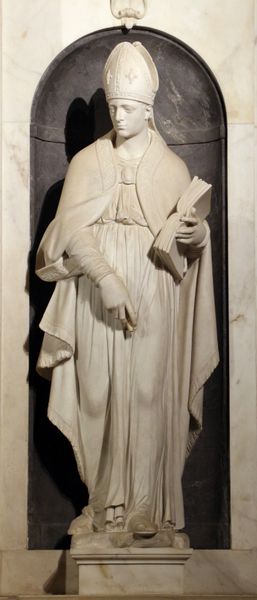
carving, sculpture, marble
#
portrait
#
carving
#
baroque
#
figuration
#
sculpture
#
marble
Copyright: Public domain
Curator: Standing before us is Gian Lorenzo Bernini's "St. Bibiana," completed in 1626. Crafted from marble, it resides in the church of Santa Bibiana, right here in Rome. Editor: Oh, she seems almost ethereally sorrowful, doesn’t she? Like she’s caught in a memory, or perhaps a premonition of pain. The soft lighting just enhances that feeling of melancholy. Curator: Indeed. This is quintessential Baroque. The way he uses the material – marble, an imperial, hard stone – to create the textures and fluidity of the garments, and imbue them with a certain gravity, speaks to a real skill. You can tell this was carved; it has its own method and history of extraction, refinement, production, placement. Editor: That golden palm frond pops! A simple addition that just screams martyrdom. I find myself wondering what kind of tools Bernini and his team used. Did he imagine the face first? Or sketch plans? Or start chipping away at the raw stone, surrendering to what was hidden within? I love to think of that rough, material process, of him, surrounded by dusty detritus, searching for meaning. Curator: The production of a saint for the church, especially then, it's so intrinsically linked to patronage, religious and social expectations, available tools, resources, workshops with their division of labor... Even down to the choice of marble! But let’s not forget her social function too: a clear piece of Counter-Reformation propaganda; a vision of faith amidst suffering. Editor: True, the theatrics were the order of the day, weren't they? But I see something more vulnerable here, less polished. It almost transcends its time. The folds in her gown…they remind me of ripples of time, almost echoing forever. She has a timelessness, an every-woman kind of sorrow. It's lovely, I feel so much tenderness when I stare at the carving of that drapery. Curator: Seeing her this way reveals much, especially in our post-industrial moment, and offers new ideas on history and production. Editor: Indeed, and a new way of understanding time too. I think I'll spend more time lost in the folds of her dress, thank you.
Comments
No comments
Be the first to comment and join the conversation on the ultimate creative platform.
